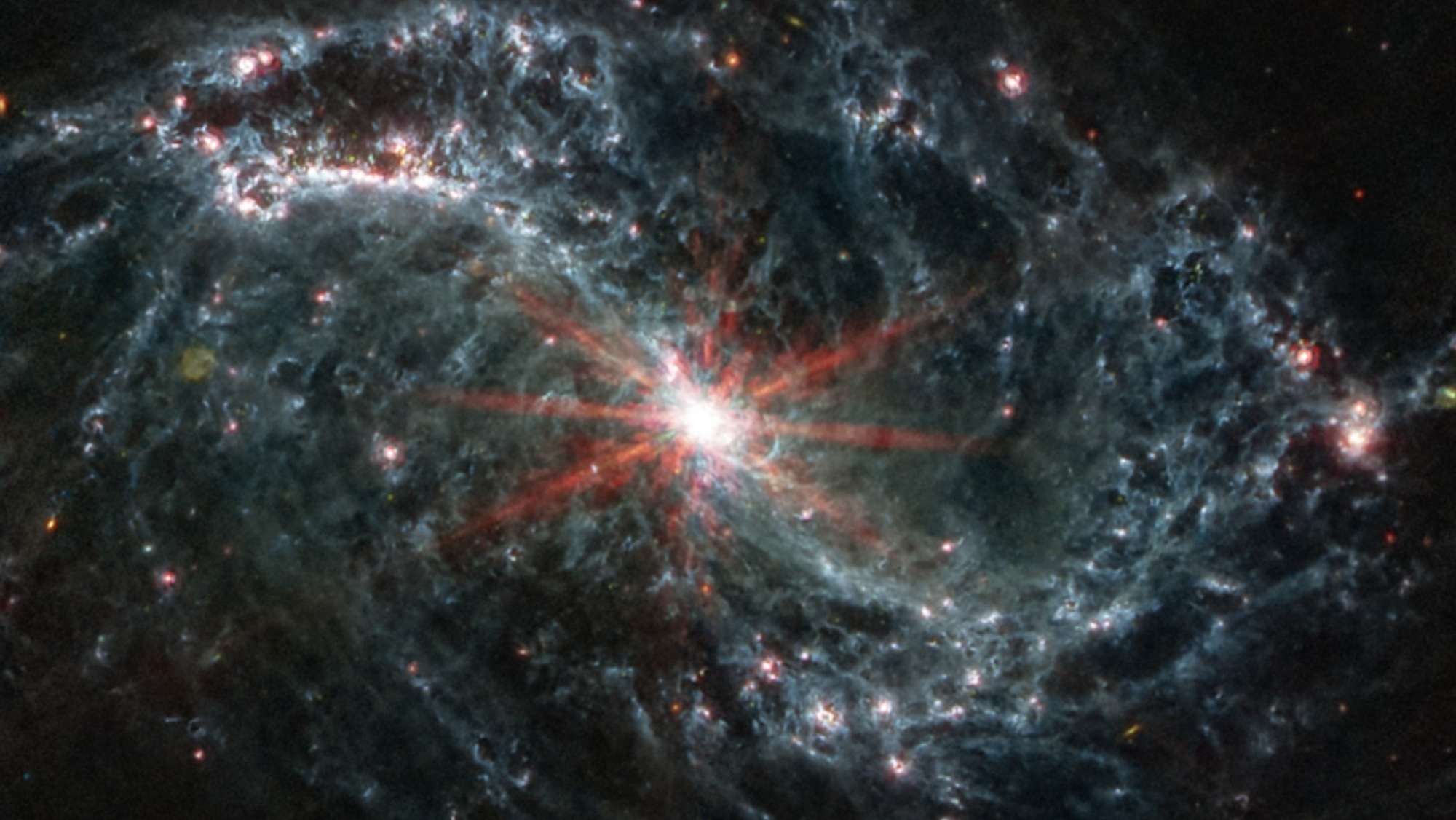A research group has been able to view faraway spiral galaxies for the very first time to study how they develop and change with time thanks to the James Webb Space Telescope.

Researchers are getting their first glimpses inside distant spiral galaxies to see how stars formed and how they change over time, thanks to the James Webb Space Telescope’s ability to pierce the veil of dust and gas clouds. Image Credit: NASA/Space Telescope Science Institute
We’re studying 19 of our closest analogs to our own galaxy. In our own galaxy, we can’t make a lot of these discoveries because we’re stuck inside it.
Erik Rosolowsky, Study Co-Author and Professor, Department of Physics, University of Alberta
Unlike previous observation tools, the mid-infrared instrument of the telescope could penetrate gas and dust clouds to offer crucial data regarding how stars develop and evolve in such galaxies.
This is light that is longer wavelength and represents cooler objects than the light we see with our eyes. The infrared light is really key to tracing the cold and distant universe.
Erik Rosolowsky, Study Co-Author and Professor, Department of Physics, University of Alberta
Before now, telescopes had the potential to capture data collected from 15 of the 19 galaxies. Rosolowsky and Hamid Hassani, a Ph.D. student and study lead author, analyzed the infrared light that has been discharged from dust grains at various wavelengths to help classify what they were seeing.
Hassani added, “At 21 µm [the infrared wavelength used for the images collected], if you look at a galaxy you will see all of those dust grains heated with light from the stars.”
From the gathered images, the researchers were able to identify the age of the stars. They found they were noting young stars that “erupt[ed] onto the scene practically instantaneously, far faster than a lot of models had predicted,” stated Rosolowsky.
Hassani stated, “The age of these [stellar] populations is very young. They’re really just starting to produce new stars and they are really active in the formation of stars.”
Also, scientists discovered a close link between the mass of stars in a region and how bright they actually were.
“It turns out this was a brilliant way to find high-mass stars,” stated Rosolowsky.
Rosolowsky calls high-mass stars “rock stars” because “they live fast, they die young and they really shape the galaxy around them.” When they are developing, he describes, they release enormous amounts of gas bubbles and solar wind, which halts star formation in that specific area while concurrently sparking star formation in other areas.
We’ve discovered this is actually really key for the long-term life of a galaxy, this kind of bubbling froth, because it keeps the galaxy from going through its fuel too quickly.
Erik Rosolowsky, Study Co-Author and Professor, Department of Physics, University of Alberta
It is a complicated process, with every new star formation playing a bigger role in how the galaxy changes with respect to time, added Hassani.
Hassani added, “If you have a star-forming, that galaxy is still active. You have a lot of dust and gas and all of these emissions from the galaxy that trigger the next generation of the next massive star-forming and just keep the galaxy alive.”
More images that document these processes are required to better understand the processes going on in distant galaxies similar to the Milky Way galaxy. Instead of looking at just one galaxy elaborately, Rosolowsky and Hassani wish to make what Rosolowsky calls a “galaxy atlas” of sorts by capturing images with as methods as possible.
Rosolowsky stated, “Through the collection of all this data, in creating this great atlas, we’d be able to sort out what’s special about one galaxy versus the unifying themes that shape galaxies as a whole.”
Journal Reference:
Lee, J., et al. (2023) PHANGS–JWST First Results. The Astrophysical Journal Letters. doi.org/10.3847/2041-8213/aca8ab.